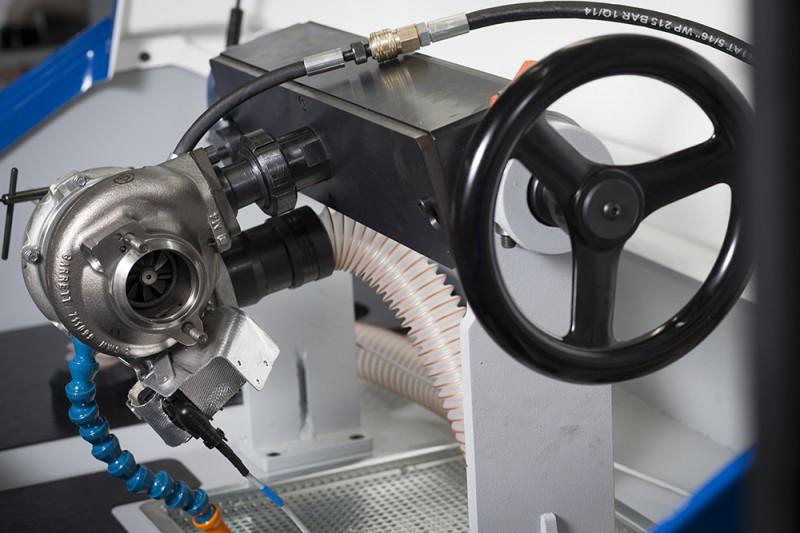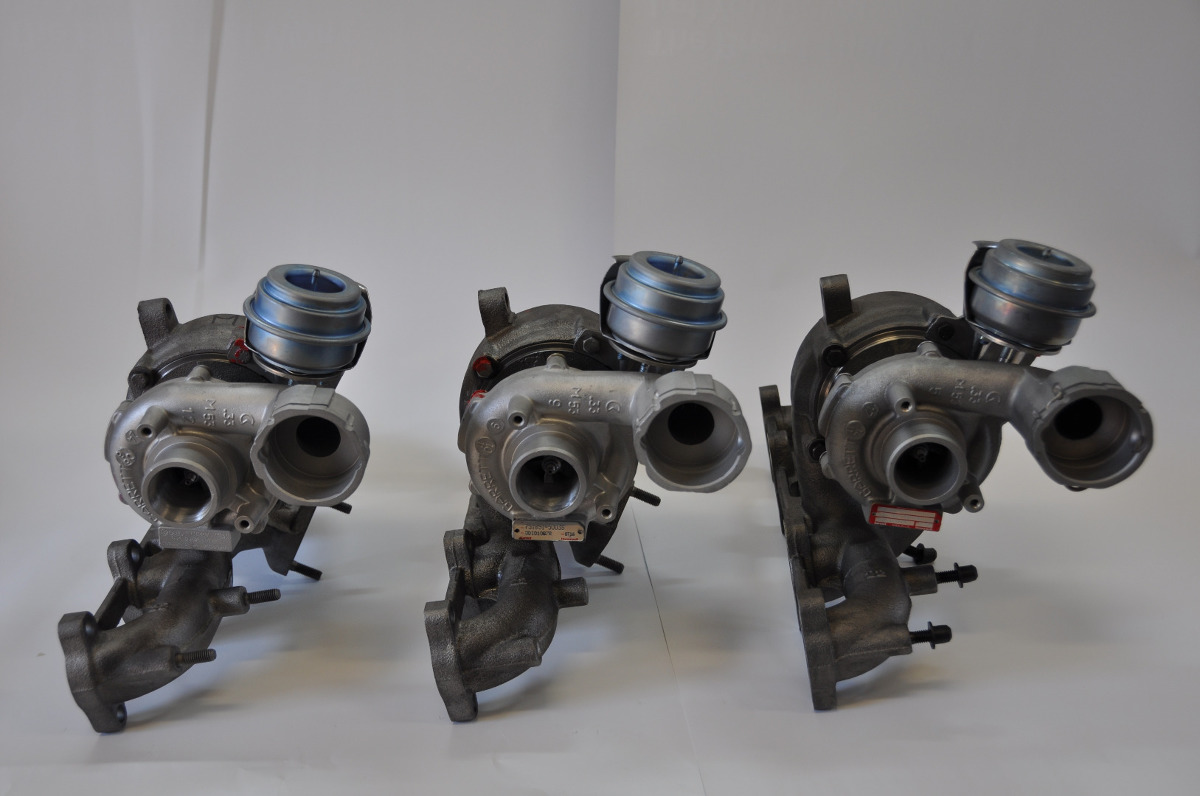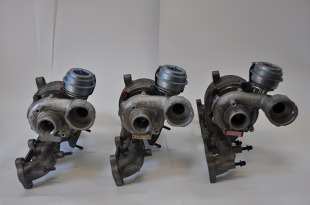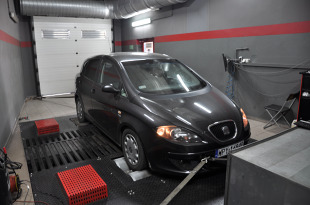
Turbocharger test
 MotoRemo specialists who provide turbo training courses often notice advertisements for companies offering turbocharger repairs. Those interested in this topic decided to check what such bets can offer. The idea arose to test turbochargers available on the market.
MotoRemo specialists who provide turbo training courses often notice advertisements for companies offering turbocharger repairs. Those interested in this topic decided to check what such bets can offer. The idea arose to test turbochargers available on the market.
 The turbochargers were purchased from factories that have been on the market for several years, are known in the local markets and employ several employees. A call from a customer who had a turbocharger failure in a Seat Toledo with a BXE 1,9 TDI engine helped select a test vehicle. The vehicle is fitted with a Garrett variable geometry turbocharger #751851-0004 for which the manufacturer does not sell repairable parts and the only option is to purchase a new or factory refurbished turbocharger.
The turbochargers were purchased from factories that have been on the market for several years, are known in the local markets and employ several employees. A call from a customer who had a turbocharger failure in a Seat Toledo with a BXE 1,9 TDI engine helped select a test vehicle. The vehicle is fitted with a Garrett variable geometry turbocharger #751851-0004 for which the manufacturer does not sell repairable parts and the only option is to purchase a new or factory refurbished turbocharger.
Finding “refurbished” turbochargers for non-original Chinese and European replacements was not difficult.
3 turbochargers were tested in this way:
– Garrett Original Reman
– regenerated with Asian details
– regenerated using European-made substitutes.
European substitutes
The car went to a workshop with a dyno, which specializes in repairing Volkswagen cars. For the first tests, we used a turbocharger, for the repair of which parts from a European manufacturer were used. It was a big surprise for us that the turbo turned out to be the worst in the tests. The power of the car was up to par, but the engine torque was 10Nm less than the turbocharger after the Garrett factory overhaul. Until the engine warmed up, the car smoked blue. The boost was undulating throughout the entire speed range, and besides, it did not match the expected pressure, especially in the range from 1800 to 2500 rpm. Considering that this is the range of speeds we most often use when driving in city traffic, such an unstable operation of the turbocharger causes improper combustion in the engine and, as a result, the smoke of the car. It can be said with a high degree of probability that the soot formed in a short time will block the system with variable geometry. After disassembling the subassembly, it also turned out that the variable geometry system used was not new, although when buying we were assured that new, high-quality European parts were used for the repair.
The editors recommend: We're looking for road stuff. Apply for a plebiscite and win a tablet!
Asian parts
 The boost pressure analysis of the tested turbocharger with a new center and a new Chinese-made variable geometry system turned out to be quite good. Over the entire speed range, one could notice undercharging, sometimes overloading the turbine, which of course affects the improper combustion of our engine, but not as much as on the previous turbine. We were not surprised by this, since many turbocharger repair shops already have devices for adjusting the flow of exhaust gases through a variable geometry system. Given the fact that the tested turbocharger is a very popular product in our market, it is not difficult to properly calibrate the device for its setting. In the case of rarer turbochargers, things are not so simple, because in order to properly calibrate these devices, several new turbines of the same number and an individual, specialized connection for a given turbine are needed. However, we found the most interesting inside the tested turbine. It turned out that the rotor, from which the Chinese core is built, is made of an alloy that is less resistant to temperatures.
The boost pressure analysis of the tested turbocharger with a new center and a new Chinese-made variable geometry system turned out to be quite good. Over the entire speed range, one could notice undercharging, sometimes overloading the turbine, which of course affects the improper combustion of our engine, but not as much as on the previous turbine. We were not surprised by this, since many turbocharger repair shops already have devices for adjusting the flow of exhaust gases through a variable geometry system. Given the fact that the tested turbocharger is a very popular product in our market, it is not difficult to properly calibrate the device for its setting. In the case of rarer turbochargers, things are not so simple, because in order to properly calibrate these devices, several new turbines of the same number and an individual, specialized connection for a given turbine are needed. However, we found the most interesting inside the tested turbine. It turned out that the rotor, from which the Chinese core is built, is made of an alloy that is less resistant to temperatures.
Using the Right Material
GMR235 is used in most diesel and some low emission petrol turbochargers. We recognize it by the hexagonal end of the rotor. This material can withstand temperatures up to 850°C. The triangular end tells us that the rotor is made of Inconel 713°C which can work up to 950°C. In a factory overhauled turbocharger, Garrett uses this stronger alloy. The other two turbines had an alloy core capable of withstanding colder temperatures. Therefore, it can be assumed that the service life of turbochargers made up of non-original parts will be much shorter than that of original ones. Unfortunately, we did not have the opportunity to test turbochargers for a long time.
During the tests, we did not analyze the composition of the exhaust gases of a car running on the tested turbochargers. However, independent studies by turbocharger manufacturers indicate that engines running with remanufactured variable geometry turbines rarely meet engine exhaust emission regulations. Of course, the choice is always up to the buyer, it is worth remembering that the purchase prices for non-original turbochargers are not much different from the prices for turbochargers after factory repair. We hope that our considerations will help you make the right decision.